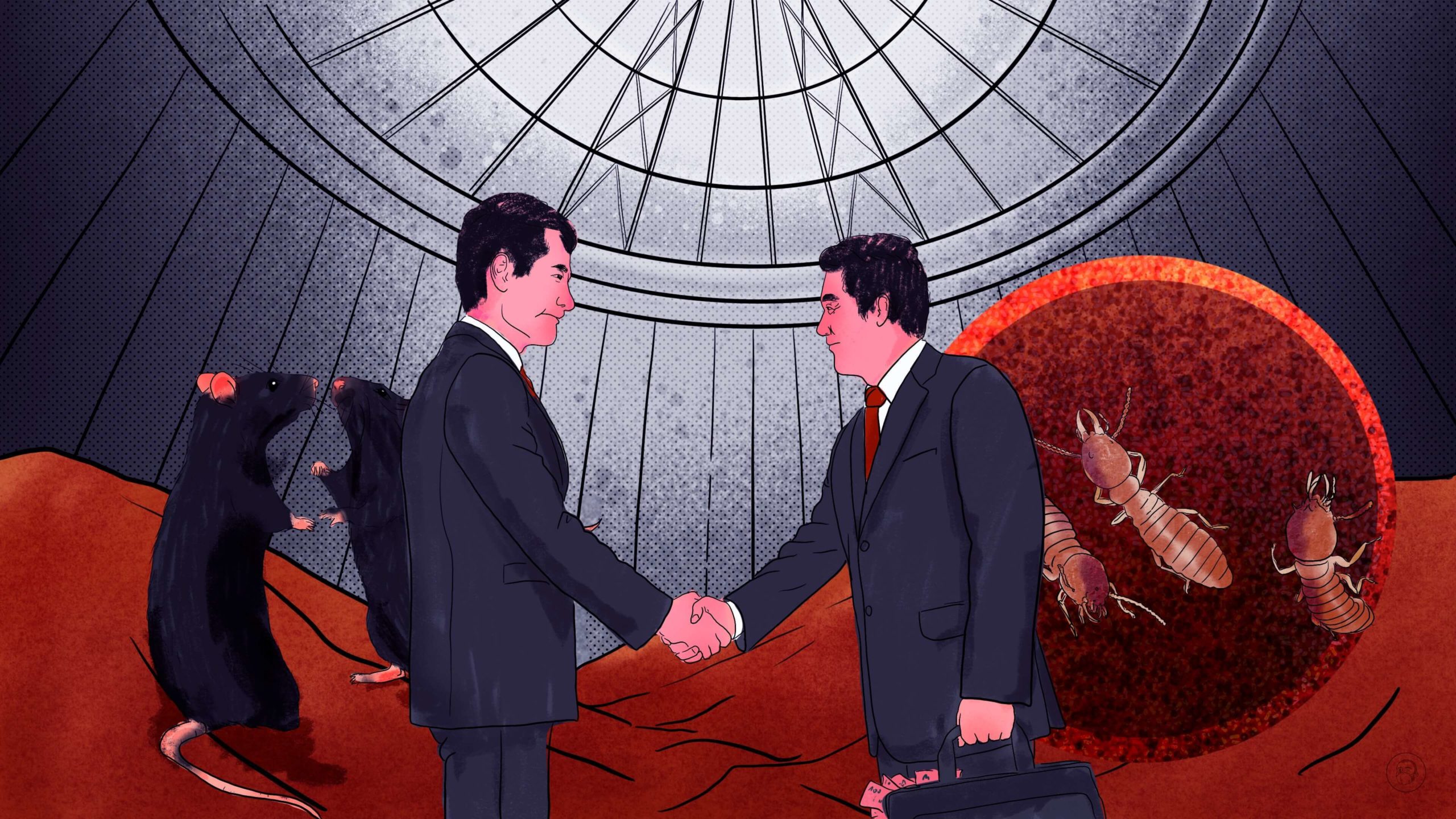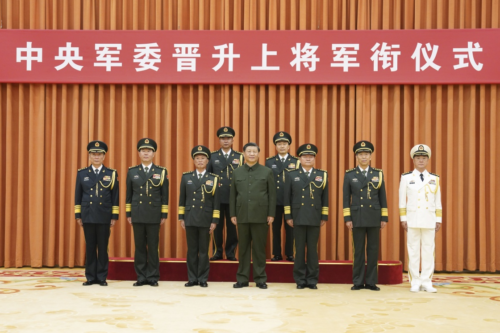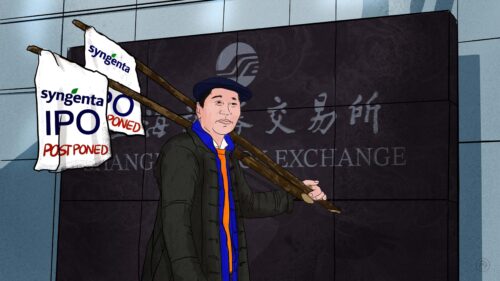Grain graft: ‘Big rats’ and ‘termites’ are eating the people’s food
The Chinese Communist Party’s highest disciplinary body says that corruption in China’s grain and cereal industry is getting worse — which is bad news for food security in China.

In 2022, China’s grain output reached a record high of 686.53 million tons, a year-on-year increase of 3.68 million tons or 0.5%, assisted by a bumper summer harvest. It was the eighth year in a row that China’s output surpassed 1.3 trillion jin (780 billion kg / 1.71 trillion pounds).
China is the world’s largest grain producer, yet it’s far from self-sufficient: in 2022, it imported a record high 165 million metric tons of grain, including 9.7 million tons of wheat, 4.47 million tons of rice, and 96.5 million tons of soybeans. A similar amount of grain was imported again in 2022.
Imported soybeans and local corruption
China’s high imports have provided opportunities for foreign producers, especially soybeans from the U.S. Chinese imports of soybeans are gradually declining with increasing local production, but China is still the world’s largest soybean importer by far, accounting for more than 60% of global trade, importing an estimated 95 million tons of soybeans in 2022.
Record levels of grain production and imports are directly related to Beijing’s attempts to ensure China’s food security, or as Xí Jìnpìng 习近平 put it, for the Chinese people to “hold their rice bowl firmly in their own hands” (把中国人的饭碗牢牢端在自己手中).
Yet there are a number of serious challenges to this objective, including the gradual shrinking of the rural workforce, and — more seriously — the decrease of arable land. According to the Ministry of Agriculture and Rural Affairs, the amount of arable land decreased from 2.03 billion mu (334.41 million acres) in 2012 to about 1.92 billion mu (316.29 million acres) in 2021.
In addition to these problems, there is another reason why all the grain harvested in China is not necessarily grain that can be counted upon to feed the nation: corruption.
For the reasons described above, China has been stockpiling grain: According to one estimate, its grain storage capacity has reached about 670 million metric tons and the big cities have 10-15 days’ worth of emergency reserves ready for use. The National Food and Strategic Reserves Administration (NFSRA) has the responsibility of supervising grain transported to and stored in thousands of depots around the country. It works with more than 5,500 state-owned grain-processing enterprises, which purchase, store, and distribute the grain. According to the NFSRA, in 2022, these enterprises purchased about 400 million tons of grain — and this is where the problem of corruption comes in.
China news, weekly.
Sign up for The China Project’s weekly newsletter, our free roundup of the most important China stories.
The problem is with the purchasing
Grain graft is now such a serious concern that it has been addressed at the very apex of the Communist Party. On January 30, the Central Commission for Discipline Inspection (CCDI), the highest disciplinary body in the Party, issued a document on its “special rectification of corruption in grain purchases and sales,” an operation that commenced in August 2021. The document contained 10 typical cases of corruption in grain trading, and identified 10 leading officials that have been caught in the CCDI’s dragnet.
At the top of the list was Xú Bǎoyì 徐宝义 former deputy general manager of Sinograin 中储粮集团, the large state-owned conglomerate at the top of the grain storage and distribution system. Xu directly intervened in grain distribution contracts, and accepted bribes of more than 13 million yuan ($1.91 million).
All 10 officials on the list held positions at large organizations in Beijing, like Xu, or at grain depots around the country. Their crimes, as described by the CCDI, included bribery, illegal distribution of storage quotas, poor supervision of reserves, insider trading, misappropriation of public funds, profiteering, giving contracts to family members, illegally selling off reserves, embezzlement, and false purchase and sales contracts.
Corruption in the grain trading business is an old problem in China, and there is a crackdown every few years (the previous one lasted from 2012 to 2014). But after two years of the current special rectification, the CCDI report ended on a discouraging note, concluding that the current level of corruption in the field of grain trading is still increasing.
Big rats and termites
Government pronouncements blame grain graft on two types of corrupt officials:
- Big rats (硕鼠 shuòshǔ ): Greedy high ranking officials with an insatiable appetite for corruption who secretly cause great damage.
- Termites ( 蛀虫 zhùchóng): Lower ranking officials who form part of a collective that causes great harm from within.
The various links in the grain trade provide numerous opportunities for big rats and termites to skim off extra earnings and game the system.
The main potential for graft used to be the first step in the system when farmers deliver their grain to the depots. When the grain arrives, it is weighed and tested, and a grade is assigned that determines the fee paid to the farmer. Before more rigorous testing standards were implemented in recent years, it was relatively easy for grain officials to grade the grain at a lower standard, pay the farmer a lower fee, and then resell the grain later at the actual higher grade and pocket the difference.
These days, however, the big rats and termites have become more sophisticated, and there are now several different avenues for grain graft, including:
- “Grain wastage,” where officials falsely inflate the amount of spoiled or wasted grain, and sell the “wasted” grain at a profit.
- “Phantom grain,” where grain depots and merchants sign false contracts for distribution and storage that are paid but never implemented.
- “Circular grain,” where grain is purchased with government support programs and then secretly resold to other depots.
- Running grain depots as personal fiefdoms, including hiring family members in key positions, signing dodgy granary rental and construction deals, and misappropriating public funds to speculate on grain futures trading.
The takeaway
The big rats and termites plaguing China’s grain storage and distribution system are directly hampering food security in China and indirectly contributing to larger grain imports.
Companies mentioned
- Sinograin 中储粮集团
Sources and additional data
- Bulletin on the national grain output in 2022 / National Bureau of Statistics
- China’s (surprising) bumper summer wheat harvest / The China Project
- 一体推进粮食购销领域腐败治理,确保粮食供给安全 / China.com.cn
- Which countries produce the most wheat? / Visual Capitalist
- ‘China didn’t hoard grains’: stockpiling to ensure domestic food security has global implications / SCMP
- China’s soybean imports have peaked and will keep falling as Beijing stresses food security, report says / SCMP
- China’s plans for ‘smart’ agriculture / The China Project
- 中央纪委国家监委公开通报十起粮食购销领域违纪违法典型案例 / People’s Daily
- 预计2022年全国粮食收购入库4亿吨 / ChinaNews.com.cn
- 深挖“硕鼠”“蛀虫” 守护大国粮仓 / Xinhua
- 1年73例粮食腐败典型 有“粮耗子”退休也被查 / Sina
- 持续释放深入整治粮食购销领域系统性腐败强烈信号 / People’s Daily
- 严查靠粮吃粮腐败问题 多名基层粮库主任被查处 / ChinaNews.com.cn






